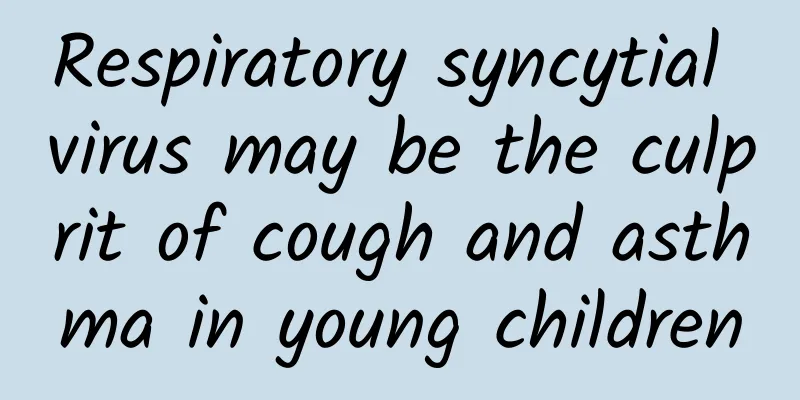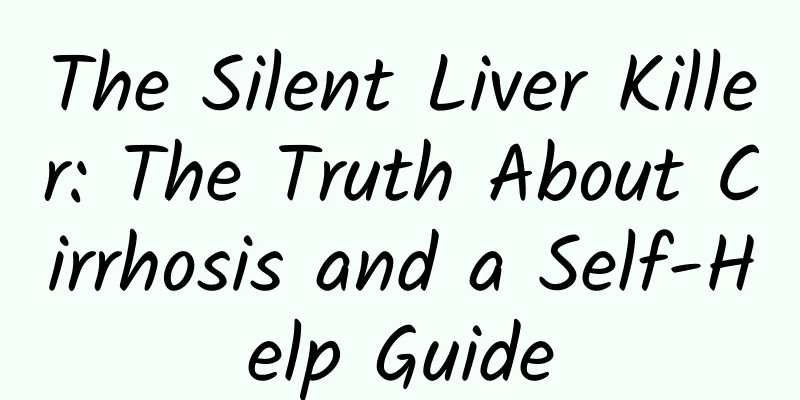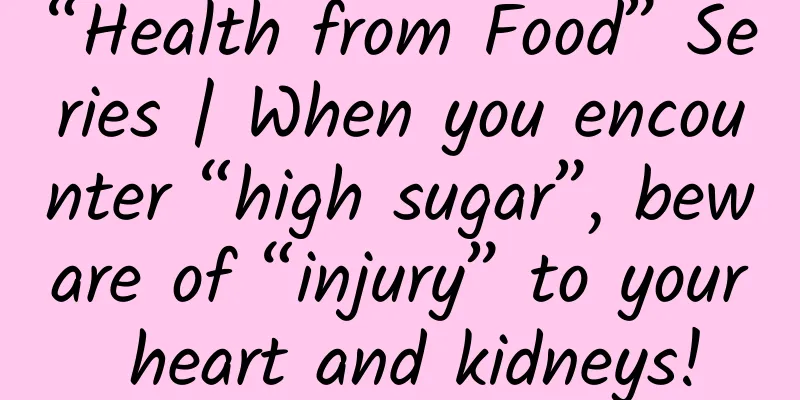Respiratory syncytial virus may be the culprit of cough and asthma in young children

|
Author: Dou Yinhan Shanghai Children's Hospital Reviewer: Dong Xiaoyan, Chief Physician, Shanghai Children's Hospital Respiratory syncytial virus (RSV) is one of the most important viruses causing acute lower respiratory tract infections (ALRTI, mainly including acute tracheitis, acute bronchitis and pneumonia) in children under 5 years old worldwide, and its infection rate increases with the age of the child. This is not a new virus. It has been more than 60 years since it was discovered. It is an important factor causing viral respiratory tract infections in infants and young children. Compared with non-RSV infections, RSV-induced acute lower respiratory tract infections in children are more severe. 1. Epidemic history of respiratory syncytial virus Respiratory syncytial virus infection is prevalent worldwide, and the specific period of its epidemic is affected by factors such as geographical location, temperature and humidity. In the northern hemisphere, the epidemic of respiratory syncytial virus is mainly concentrated in the winter and early spring from November to February of the following year; in tropical and subtropical regions, the epidemic of respiratory syncytial virus begins in late summer. The respiratory syncytial virus epidemic season in northern my country begins in mid-October and ends in mid-May of the following year; respiratory syncytial virus infection in southern my country is prone to winter and spring. The five countries with the highest incidence of respiratory syncytial virus infection are Pakistan, India, Nigeria, China and Indonesia, contributing nearly half of the global disease burden of respiratory syncytial virus-related acute lower respiratory tract infections. 2. Transmission chain of respiratory syncytial virus RSV is highly contagious and can be spread in two main ways: first, droplet transmission. If an infected person coughs or sneezes near you, you can easily be infected; second, contact transmission, such as kissing, shaking hands, or touching the infected person's clothes, sheets, toys, etc. RSV can survive on surfaces such as toys and clothing for several hours and can enter the body through the eyes, nose or mouth after human contact. Infected people are most contagious in the first few weeks after infection. For infants and people with weakened immune systems, the virus may continue to spread for up to 4 weeks even if their symptoms disappear. Figure 1 Copyright image, no permission to reprint 3. What are the symptoms when children are infected with respiratory syncytial virus? 1. The clinical manifestations of RSV infection in children are related to age. Children over 5 years old mainly suffer from upper respiratory tract infection, with mild symptoms similar to the common cold; children under 5 years old, especially infants aged 1 to 3 years old, are more likely to develop bronchiolitis, pneumonia, etc. Almost all children have been infected with RSV before the age of 2 years. Infants under 6 months old have the highest risk of RSV infection, and the younger the age, the more likely they are to develop severe symptoms [1]. 2. A notable feature of children infected with RSV is the rapid change of symptoms. The severity of symptoms usually reaches its peak 2 to 4 days after onset: the initial symptoms are the same as those of the common cold, manifested as fever, nasal congestion, runny nose and other upper respiratory tract infection symptoms; they quickly progress to lower respiratory tract symptoms such as shortness of breath, wheezing, and groaning; hypoxemia, labored breathing and other symptoms may appear after the body temperature returns to normal. 3. Repeated infection is very common. The first infection with RSV is likely to affect the lower respiratory tract, and about 50% of secondary infections affect the lower respiratory tract. Among children with repeated infections, about 25% still have lower respiratory tract infections. 4. Premature infants and newborns are prone to sleep apnea due to their relatively immature control over the respiratory center. This is also a common symptom in infants infected with respiratory syncytial virus, with an incidence rate as high as 20%. 5. Severely ill children infected with RSV may suffer from respiratory failure. High-risk factors for severe illness include premature birth, chronic lung disease of premature infants, congenital pulmonary airway malformations, pharyngeal incoordination, left-to-right shunt congenital heart disease, immunodeficiency and neuromuscular diseases. Children with these problems have a higher rate of respiratory sequelae after RSV infection, with common manifestations such as persistent wheezing, asthma, and bronchiolitis obliterans. 6. In addition to the respiratory system, respiratory syncytial virus infection can also affect other organs. Involvement of the central nervous system can lead to central apnea, epilepsy, encephalopathy, encephalitis and meningitis; involvement of the cardiovascular system can lead to myocardial damage, arrhythmia, myocarditis, and even fulminant myocarditis; other extrapulmonary manifestations such as rash, hyponatremia, hepatitis, etc. have also been reported. 7. Most children infected with RSV can recover on their own and fully without sequelae. However, the probability of children infected with RSV in infancy developing asthma is about 4 times that of healthy infants. Figure 2 Copyright image, no permission to reprint 4. How should children infected with respiratory syncytial virus be treated? Respiratory syncytial virus infection is a self-limiting disease. There is no specific drug for its treatment. Symptomatic treatment is the main treatment. Most children have a good prognosis. Specific treatment methods include the following aspects. 1. Keep the airway open. Some children may have nasal congestion. Generally, children aged 5 years and above who can cooperate can use normal saline to wash their noses. Children under 5 years old and infants can use a nasal aspirator to suck out secretions from their nasal cavities. In addition, nebulization with 3% hypertonic saline can also relieve nasal congestion symptoms. 2. Pay attention to timely water and nutritional support. Children will have symptoms such as fever, rapid breathing, poor appetite, etc., and are prone to insensible water loss, so they should be treated with fever reduction in time and maintain a light diet. At the same time, pay attention to replenishing fluids, vitamins and high-quality protein, and the method of taking small amounts and multiple times can be adopted. 3. In general, the probability of children with lower respiratory tract infections caused by respiratory syncytial virus having bacterial infections is low. When children show signs of bacterial infection, antibiotics can be used for treatment as appropriate. 4. Based on current research, routine use of glucocorticoids, bronchodilators and antiviral drugs is not recommended for treatment. 5. For critically ill children, if they have repeated high fever, difficulty breathing, mental depression, half the amount of food intake, significantly reduced urination, pale lips, hypoxemia, etc., they need to be hospitalized promptly. 5. What are the preventive measures for respiratory syncytial virus infection? 1. Monoclonal antibodies. Palivizumab is the world's first approved monoclonal antibody for the prevention of respiratory syncytial virus infection. It is approved for infants at higher risk of severe respiratory syncytial virus infection, including premature infants, premature infants with chronic lung disease, and congenital heart disease with hemodynamic abnormalities. However, the high cost limits the popularity of palivizumab. Its main alternative is nicerviromab, a long-acting, fully human monoclonal antibody that has been approved in many countries for the prevention of respiratory syncytial virus-related acute lower respiratory tract infections in infants before or during the first respiratory syncytial virus epidemic season, and can be used for children under 2 years old who are still susceptible to severe respiratory syncytial virus infection. 2. Non-drug intervention measures. This is the main strategy to prevent children from being infected with RSV. In addition to long-acting monoclonal antibodies, three RSV vaccines have been launched abroad, but there is currently no effective vaccine for children in China, and several vaccines are in the clinical trial stage. Therefore, non-drug intervention measures, such as strict hand hygiene, reducing the number of times going out, maintaining social distance, wearing masks, and strengthening physical fitness, are currently the most effective and safest way to reduce the risk of RSV infection in children in China. 【References】 [1] National Clinical Research Center for Child Health and Disease, Infection Group of Pediatric Branch of Chinese Medical Association, Infectious Disease Branch of Shanghai Medical Association, etc. Chinese expert consensus on clinical diagnosis and treatment of respiratory syncytial virus infection in children (2023 edition) [J]. Journal of Clinical Pediatrics, 2024, 42(1): 1-14. |
<<: Centipede bites: what to know and how to deal with them
>>: This muscle is not simple, it is very good at compressing nerves
Recommend
Can I go out after three days of painless abortion?
Although painless abortion is a minor operation, ...
Early symptoms of cervical cancer
It takes 6-8 years for cervical cancer to develop...
Counterpoint Research: iPhone's share of the US smartphone market reached 42% in Q3 2021
Counterpoint Research published its analysis of t...
Red discharge below
There are secretions in the human body. The eyes ...
What vitamins should I take for hair loss? Why does shampoo cause hair loss?
Although hair problems are trivial, we all have t...
How many days before menstruation do you lose weight?
Don't go on a diet when you have your period....
What are the symptoms of abnormal leucorrhea? Be careful of this symptom
Leucorrhea plays a very important role in women&#...
The crack at the root of the breast has not healed
The root of the breast is the root of the breast....
What should I do if my milk stops coming out of confinement?
Not having milk during the confinement period is ...
What is sea buckthorn? Does sea buckthorn increase internal heat or reduce internal heat?
Seabuckthorn fruit contains fatty acids, seabuckt...
An unreliable method to distinguish common poisonous mushrooms
In recent times, poisoning incidents caused by po...
Protect women's health and beware of the "pink killer" breast cancer! Remember the "four key points" for prevention!
Globally, breast cancer is one of the most common...
Benefits of drinking Bazhen Soup for women
In winter, everyone's mental state is not ver...
How to deal with spontaneous abortion
For women, whether it is a spontaneous abortion o...
Soapy water pregnancy test
Soapy water cannot be used to test pregnancy. Thi...









